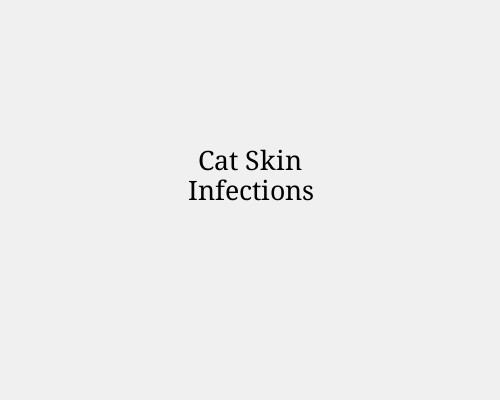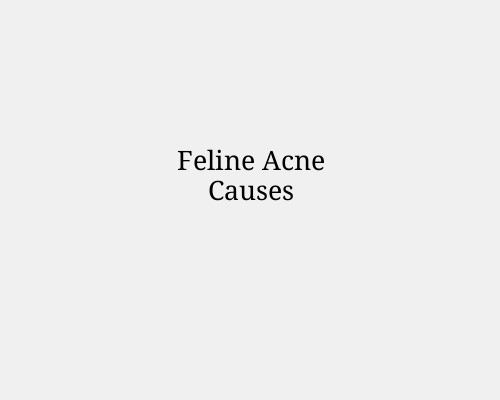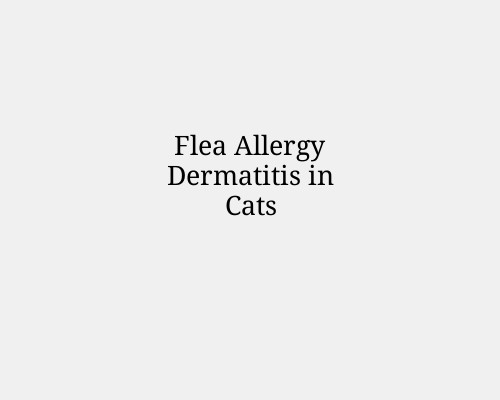Bald Spots on Cats
Bald Spots on Cats: What Do They Mean?
Cats are known for their sleek, well-groomed coats, so noticing bald spots or thinning fur can be alarming for pet owners. While some hair loss is natural due to shedding, excessive bald patches often indicate an underlying issue. Understanding the potential causes of hair loss in cats can help determine whether the problem requires medical attention.
Common Causes of Bald Spots in Cats
Allergies
Allergies are one of the leading causes of bald spots in cats. They may be allergic to food, environmental factors (pollen, dust mites, mould), or flea bites. When a cat has an allergic reaction, it may excessively groom or scratch itself, leading to fur loss.
Signs of Allergy-Related Hair Loss:
Red or inflamed skin
Excessive licking or scratching
Ear infections or head shaking (in the case of food allergies)
Sneezing and watery eyes (environmental allergies)
Solution:
If allergies are suspected, consult a veterinarian for testing. Switching to a hypoallergenic diet, using flea prevention, and reducing environmental allergens can help.
Fleas, Mites, and Parasites
Fleas, mange mites, and lice can cause intense itching, leading cats to over-groom and develop bald spots. Flea allergy dermatitis (FAD) is especially common, where a cat has an extreme reaction to flea bites, causing significant hair loss.
Signs of Parasitic Infestations:
Excessive scratching
Visible fleas or flea dirt (black specks in fur)
Scabs and sores on the skin
Restlessness or irritation
Solution:
Regular flea prevention treatments, medicated baths, and vet-prescribed anti-parasitic medications can eliminate these infestations.
Fungal Infections (Ringworm)
Ringworm is a contagious fungal infection that causes circular bald patches with scaly, red, or crusty skin. Unlike other causes of hair loss, ringworm is not caused by a worm but rather a fungus that thrives in warm, humid conditions.
Signs of Ringworm:
Circular bald patches, often on the head, ears, or paws
Brittle or broken hairs around affected areas
Mild inflammation or crusty skin
Possible spread to humans or other pets
Solution:
Ringworm requires veterinary treatment, including antifungal medications, medicated shampoos, and thorough cleaning of the home environment to prevent reinfection.
Over-grooming Due to Stress or Anxiety
Cats are sensitive animals, and stress-related over-grooming can lead to bald spots. Known as psychogenic alopecia, this behaviour often affects areas like the belly, legs, and flanks. Causes of stress may include changes in routine, a new pet or person in the household, or boredom.
Signs of Stress-Induced Hair Loss:
Hair loss in symmetrical patterns
Excessive licking, especially on the belly and legs
No underlying medical cause found by a vet
Behavioural changes like hiding, aggression, or decreased appetite
Solution:
Reducing stress through environmental enrichment, routine consistency, and interactive playtime can help. In severe cases, veterinarians may recommend calming supplements or medication.
Hormonal Imbalances and Medical Conditions
Hormonal imbalances, such as hyperthyroidism or Cushing’s disease, can lead to hair loss. Additionally, metabolic disorders, immune system diseases, and diabetes may contribute to bald patches.
Signs of Hormonal Hair Loss:
Gradual thinning rather than sudden bald spots
Increased thirst, weight changes, or appetite fluctuations
Lethargy or behavioural shifts
Changes in skin texture (oily or dry)
Solution:
If hormonal imbalances are suspected, a vet can perform blood tests to diagnose and manage the condition with medication or dietary changes.
Infections and Skin Conditions
Bacterial infections, fungal infections, or underlying skin conditions like dermatitis can cause fur loss. Scratching due to itchiness may worsen bald spots.
Signs of Skin-Related Hair Loss:
Red, inflamed, or crusty skin
Pus, scabs, or foul odours
Open wounds or lesions
Signs of discomfort when touched
Solution:
Treatment depends on the type of infection and may include antibiotics, antifungal medications, or medicated shampoos.
Genetic Hair Loss
Certain cat breeds, such as the Sphynx, Devon Rex, and Cornish Rex, naturally have less fur or are prone to hair thinning. In some cases, genetic baldness may occur in mixed-breed cats.
Solution:
If the bald patches are not accompanied by itching, inflammation, or discomfort, there is no cause for concern. However, regular skin care and sun protection are important for hairless breeds.
When to See a Vet
If you notice bald spots on your cat, consider the following warning signs that warrant a vet visit:
Rapid hair loss with no apparent cause
Persistent scratching, licking, or biting
Red, inflamed, or infected skin
Signs of illness (lethargy, weight loss, vomiting)
Hair loss accompanied by behavioural changes
Conclusion
Bald spots in cats can be caused by a variety of factors, ranging from allergies and parasites to stress and medical conditions. Identifying the underlying cause is key to finding an effective treatment. If in doubt, always consult a veterinarian to ensure your cat’s health and well-being.







